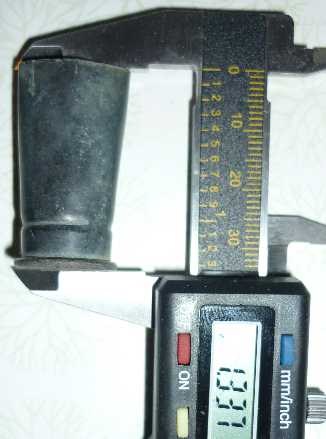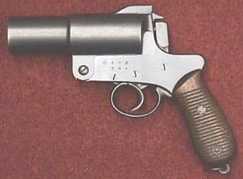|
THE CARTRIDGE COLLECTOR'S EXCHANGE |
| Contents
Cartridge
Lists
Prior Picture Pages:
Links to Other Sites
Cartridge Collectors Organizations:
Auctions:
Books:
Other Collector's Sites:
|
Home of the Old Ammo Guy's Virtual
Cartridge Trading Table
Picture Page January 2010 Those confusing .50 Carbine cartridges ......
Frankford Arsenal produced short copper cased .50 caliber cartridges with
bar-primed cases as early as 1867, and Benet-primed cases beginning in 1868,
pictured here as the first and second cartridges on the left. A similar
externally primed short
cartridge was also produced commercially by at least two companies,
The most comprehensive source of information I have on the various .50 caliber cartridges is Richard A. Hosmer's The .58 and .50-Caliber Rifles & Carbines of The Springfield Armory 1865-1872. According to him, this short cartridge is the .50-45-400 Cadet, and was intended to be used in the 1867 Navy Cadet rifle made by Remington, which used their rolling block action. Only 498 of these rifles were made; they were produced for the cadets at the Naval Academy in Annapolis, Maryland, and were used by them until 1890, when they were replaced with Hotchkiss Navy Model rifles. The 1867 Navy Cadet rifle had a short chamber which would not allow the full length .50-70 case to be seated. If these short cased cartridges were only used in Cadet rifles that were being used on the east coast until 1890, why would my friend find a couple of early Benet-primed examples out West. By the time these Cadet rifles found their way into the surplus market after 1890, more reliable externally primed cartridges would have been the norm, such as those produced by Winchester and UMC. That Winchester and UMC were producing them commercially and both companies called them a .50 Carbine would seem to indicate they were intended for military carbines that had made their way into the surplus market.
The other source of information I have on these short cased .50 caliber
cartridges is an article by Charles H. Yust originally published in one of
the early Gun Digests (the exact year I don't know) which was included
in The Cartridge Collectors
Notebook, edited by Stephen L. Fuller. Yust states that the .50 Cadet
is one of the names given to the .50 Carbine cartridge, which was intended
for use in the Sharps and Remington carbines and the Remington Cadet rifle.
He differentiates this .50 Carbine cartridge (.50-45) from the longer
version .50-55 Carbine cartridge by saying that "these rounds ... should not
be confused with the 50/55/450 carbine cartridge of 1872, which used the
50-70-1 3/4" case, but with a 55-gr. powder charge". So, if Yust is correct
about the .50-45 cartridge, the short bar-primed
version was
probably the original cartridge intended for use in the Sharps carbines that
were first converted for metallic
The .50-55-430 carbine cartridge that Yust indicates was introduced in 1872 is shown on the left in this picture with a standard .50-70 cartridge. It used the same 1.75" case as the .50-70 cartridge and a 20 grain lighter bullet, with the resulting empty space in the case filled by card wads seated just under the bullet. According to Mr. Hosmer, it was used in the Model 1870 Springfield, Remington, and Sharps Carbines, the Model 1871 Ward-Burton carbine, as well as in the Models 1867 (aka 1866) and 1869 Cadet rifles. If indeed the cartridge was introduced in 1872, then I assume the cartridge originally intended for the firearms Mr. Hosmer lists was the standard .50-70 rifle cartridge. The bottom line after all of this is that I have no satisfactory answer for my friend's question. I suppose the two cases he found could have been sold as surplus, and fired and dropped on that spot some time after the Indian skirmish is thought to have occurred. A more likely possibility is that these .50-45 'Cadet' cartridges were issued to the troops for use in the converted Sharps carbines, as Mr. Yust states. This would not be surprising, as the standard .50-70 cartridge would produce excessive recoil when fired in one of the relatively light carbines. That recoil was a problem is supported by the eventual introduction by the Army of the .50-55 carbine cartridge. The US Government Printing Office published annually the Report of The Chief of Ordnance, a compilation of reports that provided details of the testing and development of firearms, ammunition, ordnance and related items for the US military, as well as the quantities produced annually for these items. A review of the volumes for the years 1866 through 1873 would likely provide a better understanding of specifically which firearms the different .50 caliber cartridges were intended to be used in. In addition, the annual ammunition production figures would give a clue about whether the .50-45 'Cadet' cartridge was being used in larger numbers than might be expected for cadet training. Unfortunately, I don't have access to the reports for these years, so an opportunity to look through them will have to wait until I can locate them or perhaps until Google adds them to its growing library of on-line books. . .
.A pair of Japanese 35mm flares......
These Japanese 35mm flares are a couple of items that I know nothing absolutely about, and was unable to find anything about them in my reference books or even on the internet. A Google search yielded information on Japanese flare guns but nothing on the flares themselves. I was able to determine that 35mm flares were used with the Type 10 flare gun by the Japanese Army, and that the Japanese Navy used 28mm and 20mm flares. I had to depend on the experts on the International Ammunition Association's cartridge forum for an assist on these flares. One of those experts came through with translations of the headstamps, the one on the left being 'one white star' and and the one on the right 'black dragon (smoke)'. The notches on the upper edge of the left one were intended to allow identification of the flare type in the dark. Here's a picture of one of the Type 10 flare guns. While only a little over 8000 were made between 1921 and 1945, they appear to be much more common than the flares are based on my internet search for information. . . . . Who made these 7.63 Mauser cartridges?????
Discussion about these two cartridges on the International Ammunition
Association's cartridge forum led to a general consensus among the pistol
cartridge collectors that they were of Italian origin, but beyond that,
nothing was known about them. It is interesting to note the rather generic
appearance of the box
the cartridges
. . .
|

 A
friend recently found a couple of 1.337" long Benet-primed .50
cases, along with some Benet-primed .50-70 (1.75") cases, while metal
detecting the possible site of a military skirmish with Indians in Wyoming.
He contacted me to see if I could tell him what firearms these short case
cartridges might have been used in. While I am a serious cartridges
collector, I don't always pay close enough attention to the firearms that
fired them, so this seemed to be an exercise that could do both of us some
good. I have had cartridges with these short copper cases identified in my
collection for years as '.50 Cadet (or Carbine)' cartridges, but beyond that, I had no
specific firearms information listed.
A
friend recently found a couple of 1.337" long Benet-primed .50
cases, along with some Benet-primed .50-70 (1.75") cases, while metal
detecting the possible site of a military skirmish with Indians in Wyoming.
He contacted me to see if I could tell him what firearms these short case
cartridges might have been used in. While I am a serious cartridges
collector, I don't always pay close enough attention to the firearms that
fired them, so this seemed to be an exercise that could do both of us some
good. I have had cartridges with these short copper cases identified in my
collection for years as '.50 Cadet (or Carbine)' cartridges, but beyond that, I had no
specific firearms information listed. 
 without
the primer ring and and 84.1 grains for the one with the ring. Both
cartridges have square flaked powder.
without
the primer ring and and 84.1 grains for the one with the ring. Both
cartridges have square flaked powder.